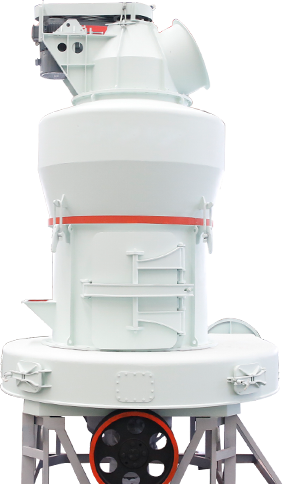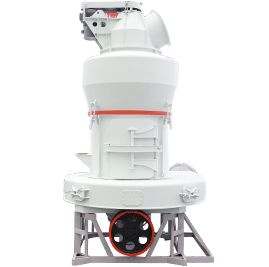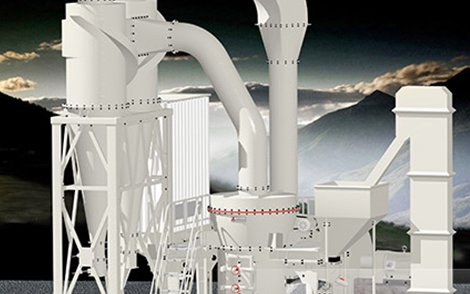الحار منتجات
ملكنا الإخبارية
coal in the cement industry-Coal in the Cement Industry Coal

Coal utilisation in the cement and concrete industries
2013年1月1日 Abstract: The utilisation of coal in the cement and concrete industries takes three basic forms: 1. As a fuel in the production of cement clinker, 2. Ash produced by burning coal in power stations is used as a component in cement rotary kiln feeds, 3. Ash

Cement Analysis IEA
The direct CO 2 intensity of cement production increased about 1.5% per year during 2015-2021. In contrast, 3% annual declines to 2030 are necessary to get on track with the Net Zero Emissions by 2050 Scenario.

Coal for cement: Present and future trends Global Cement
Coal OverviewCoal Production and Market DataInternational Coal TradingRecent Trends and EventsEgyptLooking to The FutureUnited Nations General AssemblyOECD Export CreditsThe Paris AgreementAttempts at Forecasting
The World Coal Association has estimated that there are 892Bnt of coal reserves in the world, which, at current production levels, will last around 110 years.1Coal reserves exist in most countries, although the biggest deposits can be found in the US, China, Russia and India. Coal is formed when vegetation is subjected to high pressures and tempera...

Coal utilisation in the cement and concrete industries
Abstract: The utilisation of coal in the cement and concrete industries takes three basic forms: 1. As a fuel in the production of cement clinker, 2. Ash produced by burning coal

Cement FuelsTechnologies IEA
2019年12月4日 The direct CO2 intensity of cement production increased about 1.5% per year during 2015-2021. In contrast, 3% annual declines to 2030 are necessary to get on

Coal and its application in the cement production process
2021年8月29日 According to calculations, a large amount of energy from coal is used to produce cement, of which it takes about 200 kg of coal to produce one ton of cement and

cement, concrete World Coal Association EnergyBC
2012年6月18日 Large amounts of energy are required to produce cement. Kilns usually burn coal in the form of powder and consume around 450g of coal for about 900g of

Quality of coal for Indian Cement Industry
2021年10月14日 Coal is the main fuel for the manufacture of cement in India, given the high cost and inadequate availability of oil and gas. The consumption of coal in dry

(PDF) Use of alternative fuels in cement industry
2014年6月29日 The potential is enormous since the global cement industry produces about 3.5 billion tons that consume nearly 350 million tons of coal-equivalent fossil and alternative fuels.

(PDF) Quality of Coal for Indian Cement Industry
2014年3月1日 Abstract. Coal is the main fuel for manufacture of cement in India, due to high cost and inadequate availability of oil and gas. The consumption of coal in dry process system ranges from 20-25% of

ICESE Institute Of Physics
the global cement industry driven by new facilities in emerging countries Cuihong Chen, Ruochong Xu, Dan Tong natural gas, coal etc.) • The clinker/cement ratio i.e. percentage of additives [14, 15]. Thus these three areas provides a wide scope for improvement and innovation in the production process for the both the management of energy

The Coal Handbook: Towards Cleaner
2013年10月31日 Further chapters explore coal utilisation in the cement and concrete industries, coal gasification and conversion, and value-in-use assessment for thermal and metallurgical coal. A final chapter

cement, concrete World Coal Association EnergyBC
2012年6月18日 Large amounts of energy are required to produce cement. Kilns usually burn coal in the form of powder and consume around 450g of coal for about 900g of cement produced. Coal combustion products (CCPs), such as Fly Ash also play an important role in cement manufacture and in the construction industry generally.

Coal and its application in the cement production process
2021年8月29日 According to calculations, a large amount of energy from coal is used to produce cement, of which it takes about 200 kg of coal to produce one ton of cement and about 300-400 kg of cement to produce one cubic meter of concrete. In addition to being a fuel, industrial coal also contributes to being one of the raw materials involved in the

Quality of coal for Indian Cement Industry
2021年10月14日 Coal is the main fuel for the manufacture of cement in India, given the high cost and inadequate availability of oil and gas. The consumption of coal in dry process system ranges from 20-25per cent of clinker production. That means 0.20-0.25 T of coal is consumed to produce one tonne of clinker. The cement industry consumes about ten

CO2 Emissions in 2022 Analysis IEA
2023年3月2日 Industry sector emissions declined, but the effects of China’s crackdown on debt-financed property and the ongoing real estate slump were not fully reflected in 2022 industry emissions. Construction new starts were down by around 40% year-on-year, while the production of steel and cement were just 2% and 10% lower than in 2021, respectively.

DSS055: Coal Mill Safety In Cement Production Industries
In this episode of the DustSafetyScience Podcast, we interview Vincent Grosskopf, founder of Coal Mill Safety.He has over 40 years of experience in bulk material handling industries, 25 of which were spent in dust explosion protection through Thorwesten Vent based in Germany. He’s been semi-retired since 2011 and now does tactical consulting,

Sensors Free Full-Text Advanced Process Control for
The cement industry includes energy-intensive processes, e.g., clinker rotary kilns and clinker grate coolers. Clinker is obtained through chemical and physical reactions in a rotary kiln from raw meal; these reactions also involve combustion processes. The grate cooler is located downstream of the clinker rotary kiln with the purpose of suitably cooling the

Use of coal as cement kiln Newsstone DAWN.COM
2002年10月7日 Coal was used traditionally in cement kilns all over the world since the introduction of rotary kiln at the end of the last century and it lasted till mid of the 1950 when a departure from the

Analysis of Cement Industry IdeasMakeMarket
2021年9月5日 The Indian cement industry sources close to one-fourth of its total coal requirement through imported coal. North-east package: The Government of India has also approved a package of fiscal incentives and other concessions for the country’s north-east region, namely the North East Industrial and Investment Policy, 2007.

ICESE Institute Of Physics
the global cement industry driven by new facilities in emerging countries Cuihong Chen, Ruochong Xu, Dan Tong natural gas, coal etc.) • The clinker/cement ratio i.e. percentage of additives [14, 15]. Thus these three areas provides a wide scope for improvement and innovation in the production process for the both the management of energy

The Coal Handbook: Towards Cleaner
2013年10月31日 Further chapters explore coal utilisation in the cement and concrete industries, coal gasification and conversion, and value-in-use assessment for thermal and metallurgical coal. A final chapter

Alternative Fuels in Cement Manufacturing IntechOpen
2011年8月9日 2. Alternative fuel options for the cement industry. Coal is the primary fuel burned in cement kilns, however, the use alternative fuels in cement kilns is now common and increasing. The range of alternative fuels is extremely wide. They are usually available as gas, liquid and solid as shown in Table 1.

Laying the foundation for a zero-carbon cement industry
2020年5月14日 Climate change and the cement industry: A baseline. The cement industry alone is responsible for about a quarter of all industry CO 2 emissions, and it also generates the most CO 2 emissions per dollar of revenue (Exhibit 1). About two-thirds of those total emissions result from calcination, the chemical reaction that occurs when raw materials

Coal and its application in the cement production process
2021年8月29日 According to calculations, a large amount of energy from coal is used to produce cement, of which it takes about 200 kg of coal to produce one ton of cement and about 300-400 kg of cement to produce one cubic meter of concrete. In addition to being a fuel, industrial coal also contributes to being one of the raw materials involved in the

CO2 Emissions in 2022 Analysis IEA
2023年3月2日 Industry sector emissions declined, but the effects of China’s crackdown on debt-financed property and the ongoing real estate slump were not fully reflected in 2022 industry emissions. Construction new starts were down by around 40% year-on-year, while the production of steel and cement were just 2% and 10% lower than in 2021, respectively.

Uses of Coal Industrial and Domestic Uses of Coal BYJU'S
2023年3月1日 Some of the popular industries which make use of coal are the cement industry, stone and aluminium industry, chemical and pharma industry amongst others. Coal provides numerous raw materials like benozle, coal tar, sulphate of ammonia, creosote, etc. to chemical industries. Coal is mostly used as a source of energy is most of the industries

Ethiopia: Cement factories contemplate
2019年7月18日 said the local cement factories spend 220 million dollars on coal imports. “If we can replace 40 percent of the coal with the biomass we can save up to 88 million dollars per year,” he said. The

Cement, CoalMinerals Thermo Fisher Scientific US
Improve product integrity, maximize resources, and meet specifications. Keep coal, cement, or mineral processing operations running efficiently, safely, and profitably. Thermo Scientific cross-belt online analyzers for cement and coal reduce process upsets and increase throughput with minute-by-minute composition analysis of ores and concentrates.

Sensors Free Full-Text Advanced Process Control for
The cement industry includes energy-intensive processes, e.g., clinker rotary kilns and clinker grate coolers. Clinker is obtained through chemical and physical reactions in a rotary kiln from raw meal; these reactions also involve combustion processes. The grate cooler is located downstream of the clinker rotary kiln with the purpose of suitably cooling the
كسارات البرق صافي
tunisie broyeur occasion
المحمولة آلة كسارة الحجر الجرانيت المحمولة
world iron ore consumption 2011
الفك محطم compartir-دوائر مطبوعة الدمام
كسارات المحبب الفك الصين
تستخدم ريموند مطحنة بيع-ماكينة دفع الماء 110 بار
جزيره العرب لصناعة المضخات-صناعة المراكب العمانية
عملية مبشرة جوز الهند المصنعة
used sand washing plants for sale in ireland
آلات التعدين حقوق التأليف والنشر
مطحنة صغيرة مطحنة الصلب
تشغيل الكسارة التصادمية العمودية
تستخدم على نطاق واسع الأداء الموثوق به كسارة الحجر الفك لمصنع المحجر
rubble recycle-Rubble Master s Compact Recycling Crusher
زرع جويالكروشين كامل pdf
برای تولید سیمان سیمونز
الحجر محطم سعر الجهاز في مصر 22 9
بيع آلة محطم
cema برغي ناقل كتيب تنزيل
معدات سحق زجاجة الماء الأوتوماتيكية
قائمة أسعار الحجر الجيري المسحوق الولايات المتحدة الأمريكية
تاثیر زنیت سنگ شکن
coal in the cement industry-Coal in the Cement Industry Coal
كسارة الحجر الجيري للبيع في نيجيريا
الملف الشخصي التعدين الحجر الشركة
حول لدينا
تأسست شركة Henan Lrate للعلوم والتكنولوجيا المحدودة التي تصنع معدات التكسير والطحن الكبيرة والمتوسطة الحجم في عام 1987. وهي شركة مساهمة حديثة مع البحث والتصنيع والمبيعات معًا.
على مدار أكثر من 30 عامًا ، تلتزم شركتنا بنظام الإدارة العلمية الحديث والتصنيع الدقيق والريادة والابتكار. الآن أصبحت LIMING رائدة في صناعة تصنيع الآلات المحلية والخارجية.











 2021/07/20
2021/07/20